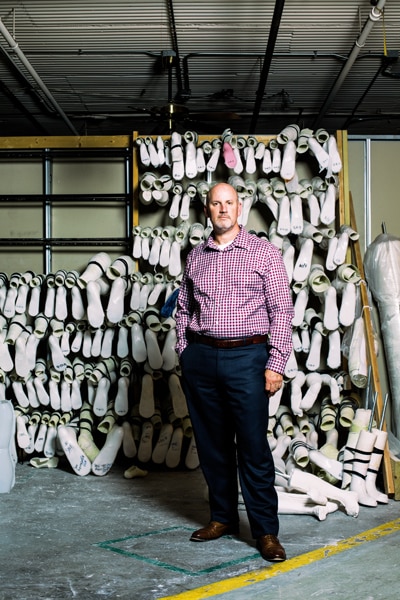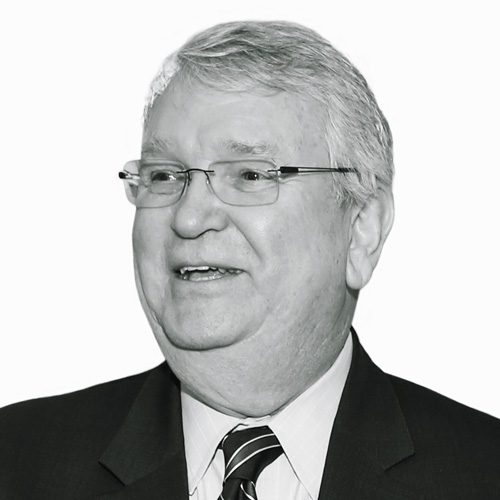When Scott Hinshon saw his opportunity to take over leadership of a healthcare organization after years of providing pediatric orthotic care, the company’s name gave him pause: Orthotic Care Services (OCS). It was a little on the simple side, not as flashy as its competitors. But he made the leap, bought the organization, and decided to keep the name. Its simplicity actually echoed his focused, passionate drive to help individuals in need, particularly pediatric oncology patients and patients with life-changing disorders such as cerebral palsy and Down syndrome. In fact, Hinshon and his team have developed products like the Go-Buddy Ankle Foot Orthosis (AFO)—an innovative brace with a hard outer boot and soft inner boot that work together to improve mobility, maintain neutral joint alignments at the foot and ankle, and prevent the irreversible deformities commonly seen in pediatric diagnoses—in order to help young patients run, jump, and play, today and in the future.
Prior to taking ownership of OCS, Hinshon spent years specializing in spinal and pediatric lower extremity orthotics. He worked closely with patients to achieve outcomes rather than delivering plastic wearables, emphasizing engineering and collaborative plans that created custom solutions for individual needs. “I don’t look to deliver braces, but rather for an opportunity to help,” Hinshon says. One primary way in which OCS accomplishes that is through a partnership with Children’s Hospitals and Clinics of Minnesota and other pediatric organizations looking to make a difference in the lives of their patients.

The Go-Buddy AFO, in particular, has been a major focus for Hinshon and his team. In years past, more and more oncology patients were being referred to OCS for foot orthotics, as their foot and leg strength were being affected by chemotherapy. OCS and physical therapists from Children’s Hospitals and Clinics of Minnesota are partnering on a research study called “The Impact of Solid Ankle Foot Orthoses on Physical Function with Chemotherapy-Induced Peripheral Neuropathy.”
Although chemotherapy is an essential part of pediatric oncology treatment, it has side effects that can be devastating. The therapy can, in fact, change the very shape of a child’s foot. “These symptoms can have permanent effects on children. Changes in bone structure of the foot and ankle lead to many other side effects,” Hinshon explains. “Early intervention is the main goal. We don’t want to wait for anticipated symptoms. To prevent injuries, you need to educate families and care providers of the risks. It gives the family hope when you communicate the information appropriately, acknowledging and truly understanding the pathology and the significant ramifications for delayed interventions.”
According to Hinshon, designing properly engineered and fitted AFO systems may allow patients to maintain the joint integrity of their body while retaining the normal function needed to help them live happy, full lives. Although cancer treatment has vastly improved, those improvements often focus on patients with life-threatening diseases rather than survivors’ physical health post-treatment.
Over the past ten years, there have been significant developments with orthotic design methodology. “At OCS, we’ve pushed the boundaries to find solutions that form, fit, and function better than they ever have before,” Hinshon explains. “In order to achieve this consistency of success, we had to take a close look at our internal processes and the consecutive steps that are taken at the point of contact with a patient.”
Attention to each and every detail has translated to improved comfort, compliance, and outcomes. Material science and fit strategies have been the driving force behind improving the functional performances and outcomes for patients. “The answers to these questions are complex but are better understood today than they were even yesterday,” Hinshon says.
Understanding gait, muscle strength, muscle tightness, joint alignment, and the effect of those factors on the human body have guided orthotic design. OCS, though, is constantly reinventing the wheel. “We seek to mimic nature,” Hinshon says. “If you look close enough, you’ll notice how the many small details add up to make a big difference.”
Mechanical fitting strategies describe how the orthoses attach to the body, how they dynamically move like flesh and bone, how they structurally interface with the ground below, and how those forces, when designed just right, enhance mobility.
In years past, orthoses would be fit to the bottom of the foot or to the back of the leg. Today, OCS’s designs envelop the limb by wrapping around it circumferentially, acting like connective tissue to maintain the orthopedic structural integrity underneath. “This prevents the limb from moving inside the orthosis and becomes a part of the body as the device secures itself to the limb,” he says. “We use materials that are hard over areas that are soft, and soft materials over areas that are hard.” This framework becomes stiff and soft at the appropriate point during the walking and running cycle.
“What is the normal physiology of walking, running, and jumping, and how do we use material and components to create optimal performance?” Hinshon asks. The solution, he’s found, is to utilize stiff and soft zones to create structural control where it’s needed, and shock absorption during impact and where movement and potential pressures are anticipated. “There is a new focus to have the orthosis interface with the body and with the ground to enhance the experience and functionality,” Hinshon says.
“We seek to mimic nature. If you look close enough, you’ll notice how the many small details add up to make a big difference.”
An average child takes ten to fifteen thousand steps per day, so neuropathy, weakness, and abnormal stride could mean serious damage to ligaments. “When muscles are weak and fatigued, all of the stress is localized to the ligament structures and cause them to lengthen, and when that rubber band-like material elongates, it stays long,” Hinshon says. These physical changes to the structure of the foot likely won’t go away, and may last patients a lifetime. They then often rely on orthotics to help ease the pain and correct untenable walking patterns. “We understand the cause and effect of these life-saving medications, so we have become better at anticipating symptoms and methods of protecting the foot structures,” Hinshon says. “Two or three years of intervention is a short-term commitment for a long-term outcome. The goal to make sure they don’t need physical therapy and bracing for the rest of their life.”
To provide the support patients need, the OCS team knew the AFO designs would need to be comfortable and not prevent kids from doing things that kids do: running, jumping, and transitioning to and from the floor. “It’s a delicate balance,” Hinshon says. “In the past three years, we’ve established reproducible processes and methods to improve the quality of the fit, which has a direct correlation to function. We’re now at the point that we want to share our innovation with other oncology centers around the country.
By educating others and creating a common understanding of the side effects, OCS hopes to show providers and patient families the impact that early intervention can have on quality of life throughout the patient’s childhood and into adulthood. A pilot study has shown positive results in OCS’s ability to help restore or maintain range of motion at the ankle. The new randomized, controlled trial aims to further understand if OCS’s technology excels past that of other orthotics types. “It’s taken us years to perfect the craft of making a circumferential, total contact style of brace,” Hinshon says.
The OCS team always has the mind-set of care. “We’re not trying to design braces; we’re trying to design solutions,” Hinshon says. “Our mission is bigger today. We want to share this information to help more kids across more hospitals.” OCS is prepared to bring awareness and share its innovations with the oncology community. “We are partnering with pediatric hospitals and orthotic companies around the country to bring competency and orthotic care to their patients,” he says. “We feel blessed to have the opportunity to help them and to be able to share good news about preventing lifelong injury to these kids’ feet and ankles.”


